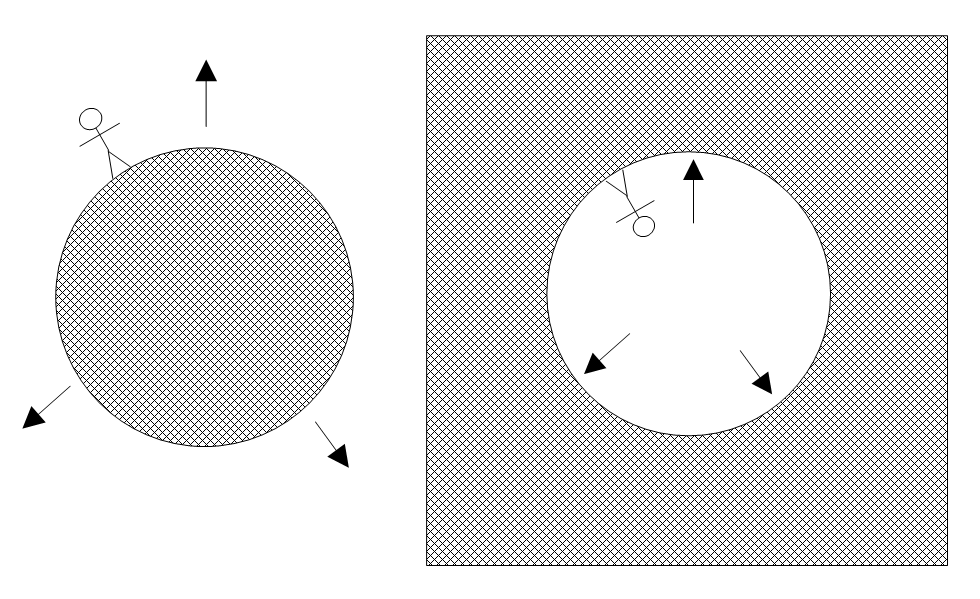In 1929, the astronomer Hubble concluded that all the galaxies were expanding away from us, leading science to conclude that the universe is physically expanding, but it seems to be doing so everywhere at once not just at its edges. If space is expanding “out”, why is light from ancient times after the big bang still all around us today as cosmic background radiation? If space is expanding, what is it expanding into? And if space is something not nothing, where does new space come from? A physics based on physical realism struggles to answer such questions.

Quantum realism suggests that space is the surface of an expanding hypersphere (2.2.5). One might think that we are on the outside of that sphere but it makes more sense to be on its inside. Our space is then the inner surface of a big bubble in the fabric of reality not the outer surface of a big bang exploding into nothing (Figure 2.11). Space then has no center or edge like the inner surface of a blown-up balloon. It also expands everywhere at once as new space as added from the quantum bulk. The waves that move upon it in any direction wrap around, so ancient light wrapped around to end up everywhere, including all around earth. This answers questions like:
- What is space expanding into? It is expanding into the quantum bulk.
- Where is space expanding? Everywhere, as the bulk fills “gaps” that arise everywhere.
- Where does new space come from? From the quantum bulk that contains our bubble.
- Are we expanding too? No, existing matter isn’t affected as new space is added.
In the next chapter, space as a surface lets light vibrate upon it, even in “empty” space.